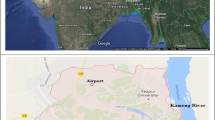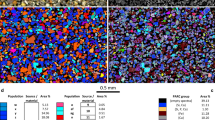Abstract
The paper deals with the X-ray microanalysis of the elemental composition of bacteriomorphic particles in 170 000-year-old Antarctic permafrost sediments and in indoor dust. A comparative analysis of the phosphorus, sulfur, calcium, and potassium contents and the Ca/K and P/S ratios in these particles and in reference microbial cells occurring in different physiological states showed that the absence of P and/or S peaks in the X-ray spectrum of an object may indicate that it is abiotic. Resting microbial forms can be revealed on the basis of the following characteristic features: an increased content of Ca, a high Ca/K ratio, and a low P/S ratio. Model experiments with nonviable bacterial and yeast micromummies with alterations in the structural and barrier functions of the cytoplasmic membrane showed that micromummies can be recognized by a superhigh content of a marker element (e.g., P, K, or Si), accumulated due to facilitated diffusion along a deliberately created concentration gradient. Such an analysis of the permafrost sediment and dust made it possible to suggest the presence of mummified cells in these objects. The possibility of using X-ray microanalysis for the detection of microbial cells in natural habitats in order to enhance the efficiency of ecological monitoring of the environment is discussed.
Similar content being viewed by others
REFERENCES
Roszak, D.B. and Colwell, R.R., Survival Strategies of Bacteria in the Natural Environment, Microbiol. Rev., 1987, vol. 51, no. 3, pp. 365–379.
Morita, R.Y., Bioavailability of Energy and Its Relationship to Growth and Starvation Survival in Nature, Can. J. Microbiol., 1988, vol. 34, no. 4, pp. 436–441.
Suzina, N.E., Mulyukin, A.L., Loiko, N.G., Kozlova, A.N., Dmitriev, V.V., Shorokhova, A.P., Gorlenko, V.M., Duda, V.I., and El'-Registan, G.I., Fine Structure of Mummified Cells of Microorganisms Formed under the Influence of a Chemical Analogue of the Anabiosis Autoinducer, Mikrobiologiya, 2001, vol. 70, no. 6, pp. 776–787.
Gorlenko, V.M., Zhmur, S.I., Duda, V.I., Suzina, N.E., Osipov, G.A., and Dmitriev, V.V., Fine structure of Fossilized Bacteria in Volyn Kerite, Origins Life Evol. Biosph., 2000, vol. 30, no. 6, pp. 567–577.
Mulyukin, A.L., Sorokin, V.V., Loiko, N.G., Suzina, N.E., Duda, V.I., Vorob'eva, E.A., and El'-Registan, G.I., Comparative Study of the Elemental Composition of Vegetative and Resting Microbial Cells, Mikrobiologiya, 2002, vol. 71, no. 1, pp. 37–48.
Soina, V.S., Vorobiova, E.A., Zvyagintsev, D.G., and Gilichinsky, D.A., Preservation of Cell Structures in Permafrost: A Model for Exobiology, Adv. Space Res., 1995, vol. 15, no. 3, pp. (3)237–(3)242.
Vorobyova, E., Soina, V., Gorlenko, M., Minkovskaya, N., Zalinova, N., Mamukelashvili, A., Gilichinsky, D., Rivkina, E., and Vishnivetskaya, T., The Deep Cold Biosphere: Facts and Hypotheses, FEMS Microbiol. Rev., 1997, vol. 20, pp. 277–290.
Dmitriev, V.V., Suzina, N.E., Rusakova, T.G., Gilichinskii, D.A., and Duda, V.I., Some Ultrastructural Features of Natural Microorganisms Isolated from the Permafrost Grounds of East Siberia by Low-Temperature Fractionation, Dokl. Akad. Nauk, 2001, vol. 378, no. 6, pp. 846–849.
Ting Shi, Reeves, R.H., Gilichinsky, D.A., and Friedmann, E.I., Characterization of Viable Bacteria from Siberian Permafrost by 16S rDNA Sequencing, Microb. Ecol., 1997, vol. 33, pp. 169–179.
Nikitin, D.I., Sorokin, V.V., Pitryuk, I.A., and Nikitina, E.S., The Elemental Composition of Bacterial Cells from Different Taxa, Prikl. Mikrobiol. Biokhim., 1998, vol. 34, no. 2, pp. 180–182.
Mulyukin, A.L., Lusta, K.A., Gryaznova, M.N., Kozlova, A.N., Duzha, M.V., Duda, V.I., and El'-Registan, G.I., Formation of Resting Cells by Bacillus cereus and Micrococcus luteus, Mikrobiologiya, 1996, vol. 65, no. 6, pp. 782–789.
Mulyukin, A.L., Lusta, K.A., Gryaznova, M.N., Babusenko, E.S., Kozlova, A.N., Duzha, M.V., Mityushina, L.L., Duda, V.I., and El'-Registan, G.I., Formation of Resting Cells in Microbial Suspensions Undergoing Autolysis, Mikrobiologiya, 1997, vol. 66, no. 1, pp. 42–49.
Karavaiko, G.I., Kareva, A.S., Avakian, Z.A., Zakharova, V.I., and Korenevsky, A.A., Biosorption of Scandium and Yttrium from Solution, Biotechnol. Lett., 1996, vol. 18, pp. 1291–1296.
Gadd, G.M., Accumulation of Metals by Microorganisms and Algae, Biotechnology: A Comprehensive Treatise in 8 Volumes, Special Microbial Processes, Rehm, H.-J. and Reed, G., Eds., Weinheim: VCH Verlagsgesellschaft, 1988, vol. 6, pp. 401–433.
Krylov, I.N., Orleanskii, V.K., and Tikhomirova, N.S., Chertification: Secular Specimens, Priroda, 1989, no. 4, pp. 73–78.
Gerasimenko, L.M., Zavarzin, G.A., Rozanov, A.Yu., and Ushatinskaya, G.T., Role of Cyanobacteria in the Formation of Phosphate Minerals, Zh. Obshch. Biol., 1999, vol. 60, no. 4, pp. 415–430.
Korenevskii, A.A., Sorokin, V.V., and Karavaiko, G.I., The Interaction of Silver Ions with Candida utilis Cells, Mikrobiologiya, 1993, vol. 62, no. 3, pp. 1085–1092.
Norland, S., Fagerbakke, K.M., and Heldal, M., Light Element Analysis of Individual Bacteria by X-Ray Microanalysis, Appl. Environ. Microbiol., 1995, vol. 61, no. 4, pp. 1357–1362.
Kajander, E.O. and Ciftcioglu, N., Nanobacteria: An Alternative Mechanism for Pathogenic Intra-and Extracellular Calcification and Stone Formation, Proc. Natl. Acad. Sci. USA, 1998, vol. 95, no. 14, pp. 8274–8279.
Cisar, J.O., Xu, D.-Q., Thompson, J., Swaim, W., Hu, L., and Kopecko, D.J., An Alternative Interpretation of Nanobacteria-induced Biomineralization, Proc. Natl. Acad. Sci. USA, 2000, vol. 97, no. 21, pp. 11511–11515.
Author information
Authors and Affiliations
Rights and permissions
About this article
Cite this article
Mulyukin, A.L., Sorokin, V.V., Vorob'eva, E.A. et al. Detection of Microorganisms in the Environment and the Preliminary Appraisal of Their Physiological State by X-ray Microanalysis. Microbiology 71, 723–734 (2002). https://doi.org/10.1023/A:1021444309796
Issue Date:
DOI: https://doi.org/10.1023/A:1021444309796




